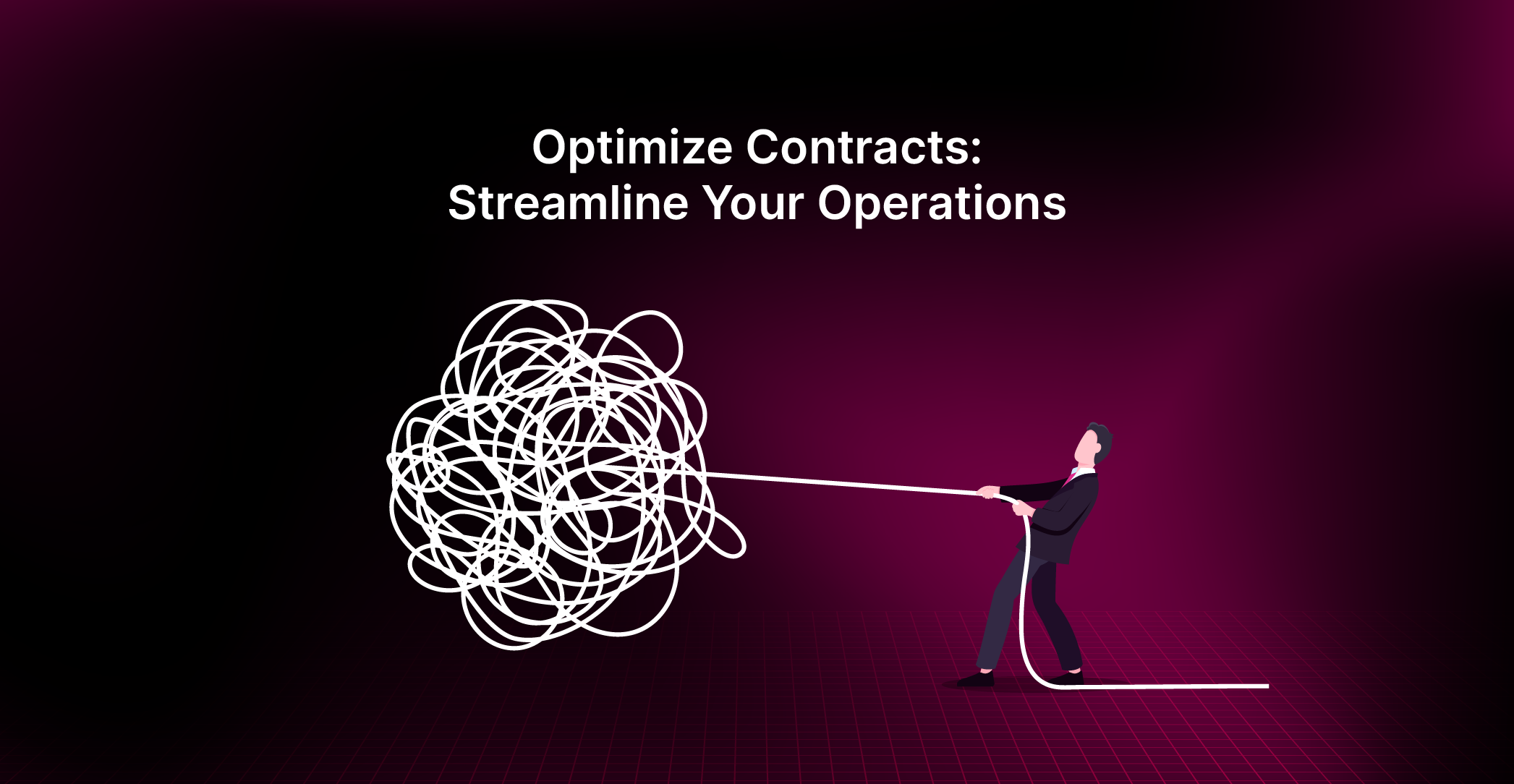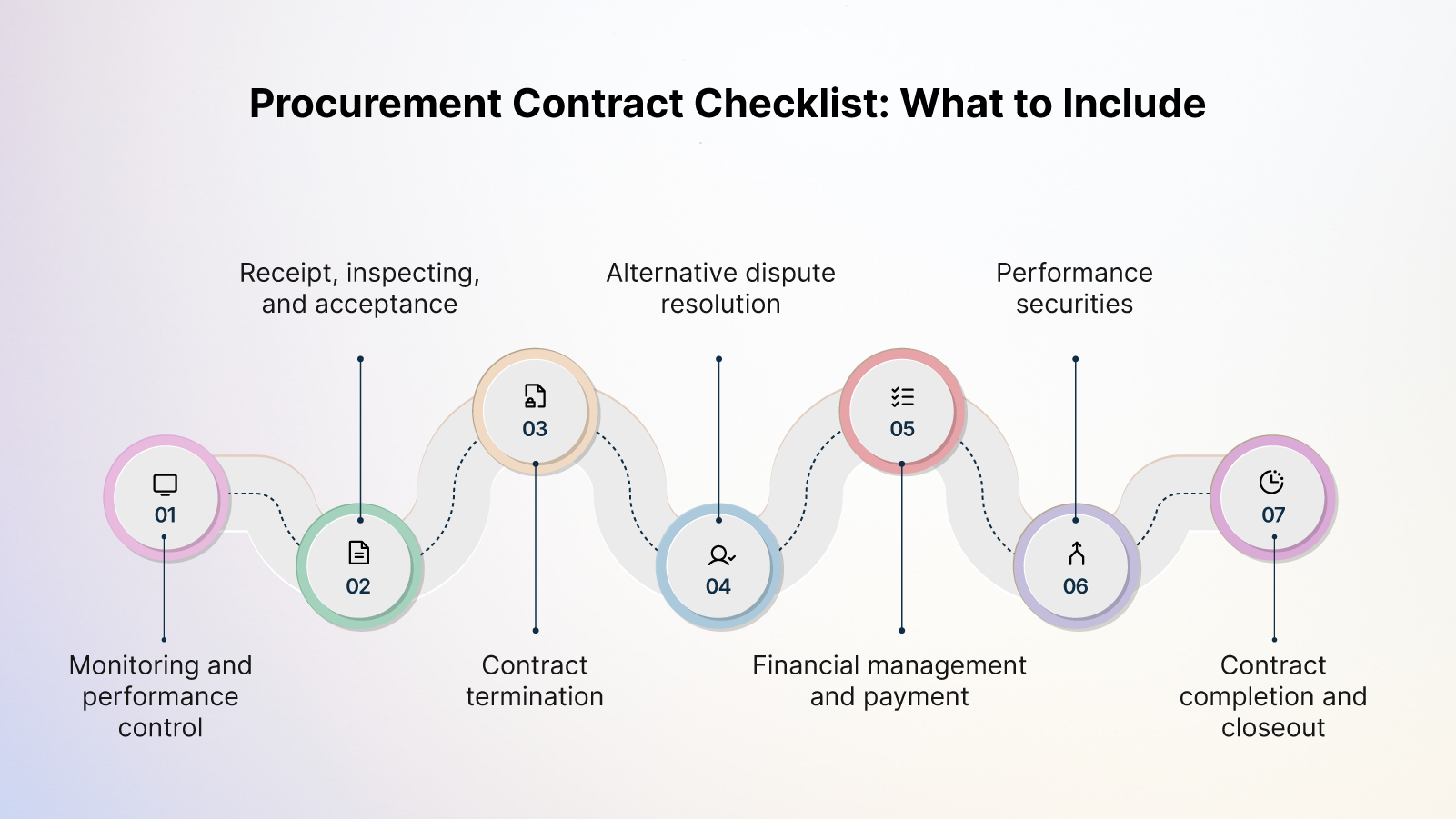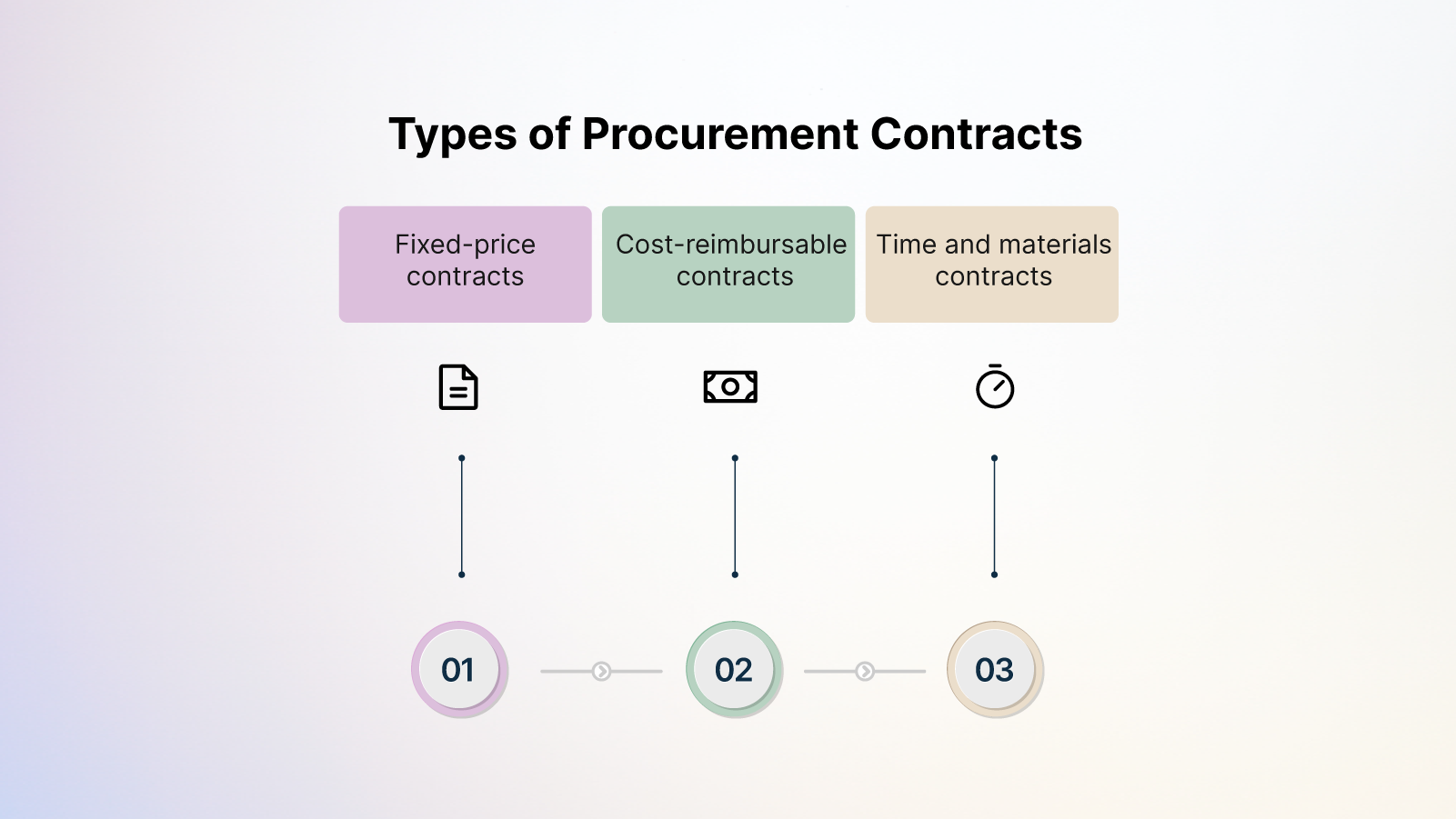Looking to make your procurement more effective?
Here's How "Let’s Do This" Leveraged Spendflo for Streamlined Procurement
See how they did it


Procurement contracts establish a legal agreement between buyers and software vendors that protects both parties during the procurement process.


According to Deloitte, nearly 40% of businesses still lack a clear procurement framework, leading to overspending and compliance gaps. With SaaS costs rising by an average of 30% annually, ineffective procurement contracts can quickly erode budgets and stall growth.
This makes procurement contracts more than just paperwork—they are the foundation for efficiency, accountability, and long-term supplier partnerships. In this article, we’ll break down why contracts matter, the best practices for structuring them, and the trends shaping procurement in 2025.
A procurement contract is the formal handshake between a company and its trusted supplier. It's an agreement that seals the deal to purchase goods or services. This contract isn't just a piece of paper. It's a detailed roadmap that lays out crucial information such as price, delivery date, and quality standards.
Beyond setting terms, procurement contracts also define accountability. They protect both parties from risks, outline remedies for non-compliance, and provide the foundation for long-term supplier relationships. A well-structured contract ensures consistency, reduces disputes, and creates measurable value for the business.
Trust and clarity are key in business, and a procurement agreement helps ensure both. Formalizing agreements ensures that the interests of both parties are safeguarded, that roles are established and that cooperation becomes a reality.
This is why procurement contracts are important to the buyers and sellers:
The procurement contract process is a structured series of steps that ensures your organization acquires goods and services at the best value. Each stage builds clarity, reduces risk, and sets the foundation for strong buyer–vendor relationships.
When building procurement contracts, it’s not enough to negotiate price alone. Contracts must serve as living documents that set expectations, measure performance, and protect your organization from risk. Below are two critical areas to focus on: Performance Management and Risk Management.
Procurement contracts should include clear mechanisms to track and evaluate vendor performance. This helps ensure suppliers meet obligations and continuously improve over time.
Every procurement contract must also include measures to safeguard the business against disruptions, compliance gaps, or financial losses.

A procurement contract sets the foundation for accountability between buyers and vendors. With AI-enabled procurement systems, every stage of the contract lifecycle can be tracked, monitored, and optimized. For a complete view, refer to the AI overview. Below is a checklist of the core elements every procurement contract should include:
Clearly define what’s being purchased, timelines for delivery, and measurable deliverables. AI-powered intake tools can ensure all requirements are captured consistently.
Contracts should include provisions for tracking vendor performance with KPIs, dashboards, and automated alerts. Regular reviews—supported by AI monitoring—help ensure accountability and prevent service gaps.
Establish procedures for receiving goods or services, verifying compliance with contract specifications, and formally accepting or rejecting deliverables. AI can flag discrepancies in real time.
Payment schedules, pricing, penalties for late payment, and approval workflows must be clearly outlined. AI-driven treasury modules can forecast cash flow and automate payment reconciliations.
Include guarantees like performance bonds or bank guarantees to mitigate risk. If vendors underperform, AI-driven alerts can trigger claims or renegotiations.
Define conditions for termination (e.g., breach, non-performance) and outline the dispute process. Automated contract agents can surface risks early and flag renewal or termination deadlines.
Mediation or arbitration clauses help resolve conflicts faster and avoid lengthy litigation. AI-enabled contract repositories can make prior dispute history easy to reference.
Cover supplier risk assessments, data security requirements, and compliance with relevant standards (e.g., GDPR, SOC 2). AI tools can automate continuous compliance monitoring.
Modern contracts should include collaboration protocols—like approved tools, meeting cadences, and escalation paths. AI-driven platforms help standardize and track communication.
Finalize payments, resolve outstanding issues, and capture lessons learned. AI-generated reports can summarize contract performance for future sourcing decisions.

Choosing the right type of procurement contract depends on project needs, complexity, and risk tolerance. Here are three common types used in various business scenarios:
In a fixed-price contract, the buyer agrees to a set price for the entire project regardless of actual costs. This provides predictability and budget certainty, which is ideal for projects with well-defined scopes. However, it shifts most of the risk onto the vendor. Vendors may inflate prices to cover unexpected costs, and changes to scope can trigger disputes. With AI-enabled contract management, companies can benchmark pricing and spot deviations early, ensuring terms remain fair.
Here, the buyer reimburses the vendor for actual costs incurred plus an additional fee or profit margin. This structure provides flexibility, making it suitable for projects where requirements may evolve over time. The trade-off is increased financial risk for the buyer, since costs can escalate quickly without oversight. Automated cost tracking and AI-based forecasting help procurement teams stay on top of expenses, flagging anomalies before they spiral.
Under this model, the buyer pays for labor hours and materials as they are used. It’s the go-to choice when project scope is unclear or still evolving. While it provides agility, the risk lies in unchecked spending if work drags on. Close monitoring is essential. Digital procurement platforms with AI-driven dashboards can monitor usage in real time, offering alerts that help buyers manage budgets effectively.
Modern businesses are currently being built on SaaS solutions - 99 percent of organizations are currently using at least one SaaS product in their technology stack. This massive adoption has made procurement contracts significant to influence the manner in which SaaS providers and clients interact.
These agreements are legally binding. They build trust, set expectations, and ensure that both the provider and client are aligned on deliverables, security, and long-term scalability.
The following are some of the main details that must be taken into consideration in SaaS procurement contracts:
Definition: A software licensing model defines how a product can be accessed, distributed, and used within your business. Common structures include per-user, per-device, consumption-based, and enterprise-wide licenses. The choice of model directly impacts both cost and flexibility in managing SaaS tools.
Why It Matters:
Best Practices:
Definition: These clauses establish how vendors must store, manage, and protect customer data. They often align with recognized frameworks such as SOC 2, GDPR, HIPAA, or ISO 27001, ensuring sensitive information is handled securely.
Why It Matters:
Best Practices:
Definition: An SLA outlines vendor commitments around system uptime, response times, and service availability. It sets the expectations for performance, accountability, and support levels.
Why It Matters:
Best Practices:
Definition: Scalability terms define how a SaaS product can grow with your business needs—covering the addition of users, storage, modules, or integrations without expensive renegotiations.
Why It Matters:
Best Practices:
Procurement is no longer limited to managing costs and compliance. In 2025, forward-looking organizations are rewriting contracts to account for technology, sustainability, and resilience. Here are three key trends shaping procurement contracts this year:
Artificial intelligence is streamlining procurement by automating repetitive tasks like vendor onboarding, compliance checks, and contract renewals. AI-driven contract analysis can flag risks, suggest cost-saving clauses, and track performance against KPIs in real time. Companies adopting automation gain faster cycle times, fewer errors, and clearer visibility into obligations—freeing teams to focus on strategic work.
Environmental, Social, and Governance (ESG) factors are becoming standard inclusions in procurement contracts. Businesses are requiring suppliers to meet sustainability benchmarks such as carbon reduction targets, ethical labor practices, and responsible sourcing. These clauses not only ensure compliance with global regulations but also strengthen brand reputation and resilience in the supply chain.
Digital-first procurement is now a competitive advantage. Modern platforms consolidate vendor data, manage renewals, and deliver analytics to guide smarter decisions. Digital transformation ensures procurement is not reactive but proactive—reducing risks, improving supplier collaboration, and delivering measurable cost savings. Organizations with digitized procurement functions will be better prepared to adapt to market shifts in 2025 and beyond.

Inefficient procurement contracts often lead to hidden costs, missed renewals, and strained vendor relationships. Without visibility, businesses risk overspending and losing negotiating power at critical renewal stages.
One of our customers, a mid-market SaaS company, cut $500K in vendor spend by consolidating contracts on Spendflo’s platform. With automated reminders and expert-led negotiations, they reduced renewal surprises and achieved measurable savings in less than a year.
But the reality is that most organizations still struggle with fragmented contracts and rising SaaS expenses. Delays in approvals or lack of transparency can quickly snowball into financial and compliance risks.
That’s where Spendflo steps in. From centralized contract management to renewal intelligence and embedded negotiation support, Spendflo simplifies procurement while guaranteeing up to 30% savings on SaaS spend.
Ready to bring clarity and control to your procurement contracts? Book a free demo with Spendflo today.
A procurement contract is a legally binding agreement between a seller and a buyer. It outlines the terms and conditions for purchasing goods and services, including details like pricing, delivery schedules, quality standards, etc.
A performance contract typically includes:
Yes, procurement contract lifecycle management (CLM) is crucial for businesses as it ensures proper creation, execution, and monitoring of contracts. This leads to better risk management, improved compliance, and stronger vendor relationships.
In a fixed price contract, the buyer and seller agree on a pre-determined price for the deliverables, regardless of the actual cost incurred by the vendor. In this type of contract, the seller bears the risk of cost overruns and is responsible for delivering within the agreed budget.
In a cost-reimbursement contract, the buyer reimburses the seller for the actual costs incurred along with a fee or profit margin. However, in this type of contract, the buyer bears most of the risk.
A procurement contract clearly defines the roles, responsibilities, and expectations between the buyer and the seller. This reduces the risk of compliance, performance, or supply chain, allowing businesses to manage potential issues effectively.
Procurement professionals can improve supplier relationships by using a contract management platform that simplifies vendor selection, contract negotiation, and purchase order tracking. Workflow automation helps streamline communication and timely performance monitoring. Using contract templates also standardizes vendor contracts, enhancing customer service and trust.
For state agencies, effective contract management ensures transparency and efficiency in handling vendor contracts. A contract management platform supports workflow automation, contract negotiation, and performance monitoring, making it easier to manage purchase orders and maintain accountability. It also enables procurement professionals to deliver better customer service through standardized contract templates and streamlined supplier relationships.